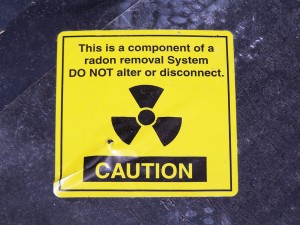Radiation Defense
Is radon really bad for you?
Breathing radon over time increases your risk of lung cancer. Radon is the second leading cause of lung cancer in the United States. Nationally, the EPA estimates that about 21,000 people die each year from radon-related lung cancer. Only smoking causes more lung cancer deaths.
Nonetheless, the absolute numbers of radon-induced lung cancers are much bigger in people who smoke, or who have smoked in the past, due to a solid consolidated effect of cigarette smoking and also radon. Because research, a significant result (95% CI) was acquired for the Bq/m3 group.
Chronic exposure to radon gas raises the threat of developing lung cancer. In the USA, an estimated 21,000 individuals pass away from radon-related lung cancer every year (compared with 160,000 lung cancer cells deaths from cigarette smoking), according to the EPA. Radon is the 2nd leading root cause of lung cancer, and it's the leading root cause of lung cancer cells in nonsmokers, according to the agency.
Is radon mitigation really necessary?
When radon gas enters the body, it exposes the lungs to small amounts of radiation. In small quantities, experts say this is harmless. However, in persistent exposures or larger quantities, radon can damage the cells of the lining of the lungs, increasing a person's chance of developing lung cancer.
EPA refused ground level discharge of radon mostly because of the possibility for re-entrainment of the gas right into your home and also as a result of the opportunity of kids being exposed to high radon levels. The focus of radon gas at the discharge factor can be 10s of hundreds of picocuries per minute.
- Your risk of lung cancer increases substantially with direct exposure to greater radon degrees.
- Radon gas is a naturally-occurring byproduct of the radioactive decay of Uranium in the dirt.
- Depending on your geographical place, the radon levels of the air you take a breath beyond your residence might be as high as 0.75 pCi/L.
- The US EPA has placed it clearly, mentioning, "Any kind of radon direct exposure has some risk of triggering lung cancer cells.

In the US, approximately 14 states have a state radon programs which train and also certificate radon reduction service providers as well as radon dimension professionals. If your state licenses radon professionals contact your state health and wellness division, to identify. Without the proper equipment or technical knowledge, radon levels can actually http://connerqeue738.raidersfanteamshop.com/learn-more-about-radon-testing boost or create various other extra expenses and prospective risks. A list of licensed reduction service providers is available with state radon offices, which are detailed on the EPA internet site at/ radon/whereyoulive. html.
In a residence with forced air heating and cooling, radon gas can conveniently be dispersed throughout the whole residence. When radon gas is discharged via a radon reduction system over the roof covering, the radon focus falls off substantially with distance from the point of discharge. In fact, the radon gas concentration comes close to history degrees at 3-4 feet from the discharge point.
How long does it take for radon to cause cancer?
Fact: You will reduce your risk of lung cancer when you reduce radon levels, even if you've lived with an elevated radon level for a long time. Keep in mind that radon levels below 4 pCi/L still pose some risk and that radon levels can be reduced to 2 pCi/L or below in most homes.